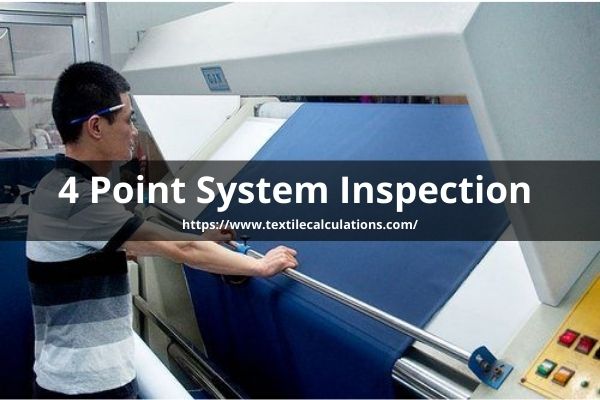Fabric Inspection System:
Fabric inspection system is a quality control process used in the textile industry to examine and detect any defects or faults in the fabric. The fabric inspection process is crucial as it helps to identify any issues in the fabric before it is used in the production of finished products such as clothing or home textiles.
The fabric inspection system involves the use of specialized machines that are designed to examine the fabric for defects such as holes, stains, tears, or irregularities in color or texture. The fabric is typically rolled onto a fabric inspection machine, which uses a combination of light and magnification to detect and highlight any defects or faults in the fabric.
The inspection is done to control the quality is means by examining the products without any instrument. To examine the fabric, sewing, button, thread, zipper, garments measurement, and so on according to specification or desired standard is called inspection. There are a number of systems to inspect the fabric. For example, four point system inspection, ten points system, and Graniteville system, and so on. But there is no facility for identifying the shade, handle, and bias of the fabric. Only Four points system is granted by AAMA (American Apparel Manufacturers Association) and AAQC (American Association of Quality Control) and that is why widely used for fabric inspection and described below:

Four Point System Inspection in Apparel Industry
4 Point Inspection System:
In this method, defective points are found out in 100 square yds. of fabric by inspection. The fabric must be rejected if the defective points are greater than 40.
| Defects length for warp way and weft way | Points |
| Up to 3 inch | 1 |
| 3” – 6 “ | 2 |
| 6” – 9” | 3 |
| Above 9” | 4 |
| Defects area for holes and openings | Points |
| 1 “ or less than 1” | 2 |
| Above 1 “ | 4 |
Note: It must be remembered that the defective point must not be more than 4 in each yard.
Example: For 100 square yards inspection.
| Effects length | No. of faults | No. of points |
| Up to 3 inch | 10 | 10×1 = 10 |
| 3” – 6 “ | 5 | 5×2 = 10 |
| 6” – 9” | 2 | 2×3 – 6 |
| Above 9” | 0 | 0×4 = 0 |
| Total = 26 |
Points / 100 sq. yards,
……….Total defected points ….. …..100 ….. 36”
= …………………………………………… × …………..×…………………………………….
………….Total fabric length …..1 ………Inspected fabric width
……….26 100 36”
= ……………….×………….×…………
………120 1 48”
= 16.25 (ANS)
The fabric roll is held or hung at the back of the machine. Then the fabric from the roll is pulled over the glass of the inspection table and is wound in another role placed in front of the machine. Fabric unwinding from one roll and wound in another is done by motor or by manually. Arrangement of light is done from the lower end of the glass of the inspection table. As a result, during the passing of the fabrics on the glass, if there are any defects in fabrics, they can easily detect and marked right away.

Thanks for this great post, i find it very interesting and very well thought out and put together. I look forward to reading your work in the future.